Media Architecture
-
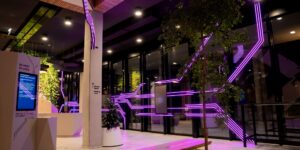
AT&S Erlebniswelt
Interaktives Nervensystem schafft Verbindungen
AT&S ist ein führender Anbieter von High-End-Leiterplatten und Substraten für die Halbleiterindustrie mit Sitz in Österreich. Das Unternehmen hat das Ars Electronica Futurelab eingeladen, sich an der Gestaltung der neuen Zentrale zu beteiligen – einschließlich der Installation eines interaktiven „Nervensystems“.
-
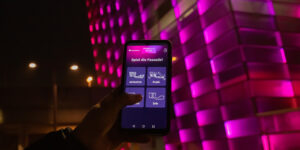
Fassadenspiel
38.500 LEDs für öffentliche Kreativität
Die Fassade des Ars Electronica Center prägt mit ihren 38.500 LEDs seit 2009 das Linzer Stadtbild. Nur ein Jahr später konnte die Öffentlichkeit erstmals per Fassadenterminal die Kontrolle über die leuchtende Museumshülle übernehmen, 2022 folgte die Neuauflage – mit dem Fassadenspiel und einer Website voller frischer kreativer Möglichkeiten.
-
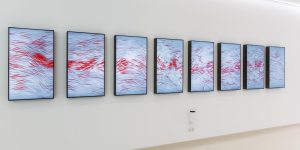
insight | out
insight | out, a work of media art by the Ars Electronica Futurelab, is a portrait of Oberbank AG Linz rendered on a fragmented frieze made up of eight video screens. The medium itself thus evokes the multiplicity of influences that flow into this portrait – the values that this long-established financial institution represents, the…
-
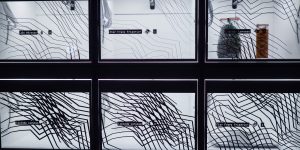
SAP Data Kitchen
The Ars Electronica Futurelab assisted SAP in designing a meeting place for innovative start-ups based on the model of the Hana Café in Palo Alto. The so-called Data Space, which would take shape at Rosenthalerstraße 38 in the center of Berlin, features two storeys of which the first floor is composed of an event space…
-

Building Bridges
The Bridge is one of the main passageways connecting two building complexes on the SAP Walldorf campus and it is host to the interactive music piece Building Bridges, jointly composed with Vienna-based composer Rupert Huber. Translating the movements of the pedestrians through a compositional algorithm, The Bridge serves as stage and instrument at the same time.
-
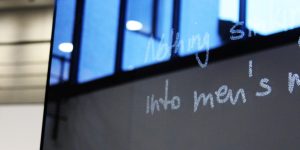
Vedaport / Monolith
The six meter tall Monolith – completed in spring 2014 – consists of 24 frameless screens, wrapped in translucent mirror panels. These panels render the Monolith almost invisible at first glance and enhance it.
-
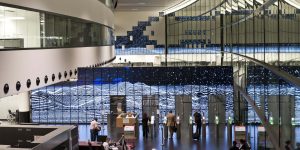
ZeitRaum
ZeitRaum (“TimeSpace”) is an interactive art installation the Ars Electronica Futurelab designed for the new terminal at Vienna International Airport. It creates real-time interpretations of arriving and departing flights.
-
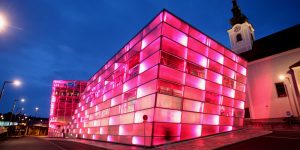
Ars Electronica Center Fassadenterminal
Das Fassadenterminal wurde vom Ars Electronica Futurelab entwickelt und 2010 der Öffentlichkeit vorgestellt: Es ermöglichte die künstlerische Nutzung der Medienfassade des Ars Electronica Center, die mit 38.500 LEDs ausgestattet ist.
-
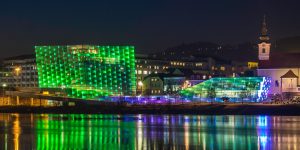
Ars Electronica Center Media Facade
Since January 2009, the Ars Electronica Center has been shining night after night. 38,500 LEDs are built into the Ars Electronica Center’s 5,100-m2 glass shell. Every one of the façade’s 1,100 glass panels thus becomes what amounts to a pixel that can be individually controlled.
-
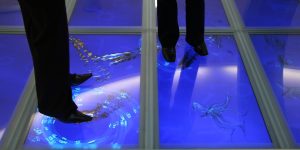
Source.Code
SAP, as an enterprise that configures and provides an organizational setting for abstract business processes, is Source.Code’s point of departure.
-

UnitM
The Ars Electronica Center was commissioned to carry out the “unit M” project by the Austrian Institute for Economic Promotion (WIFI) in Linz.